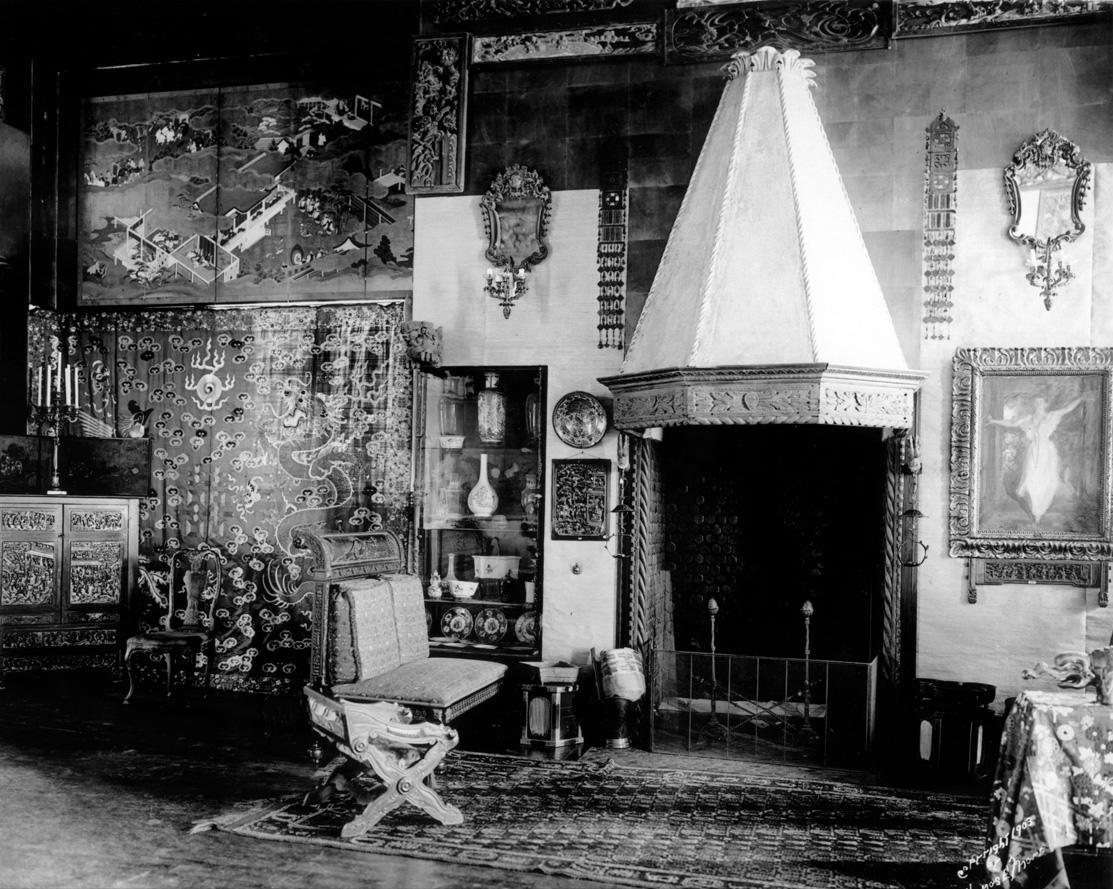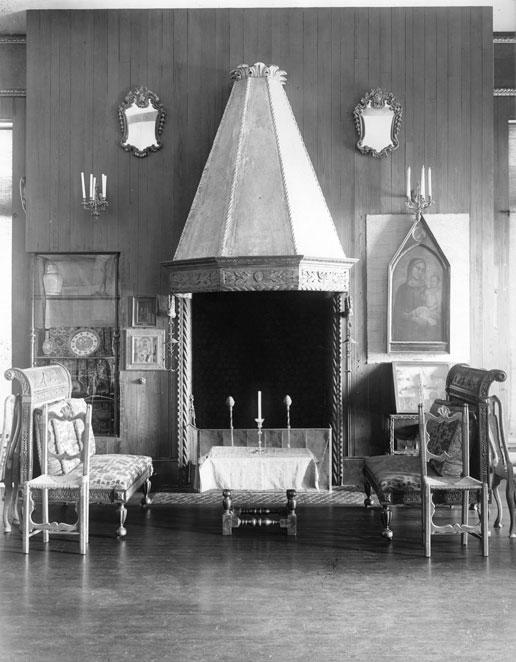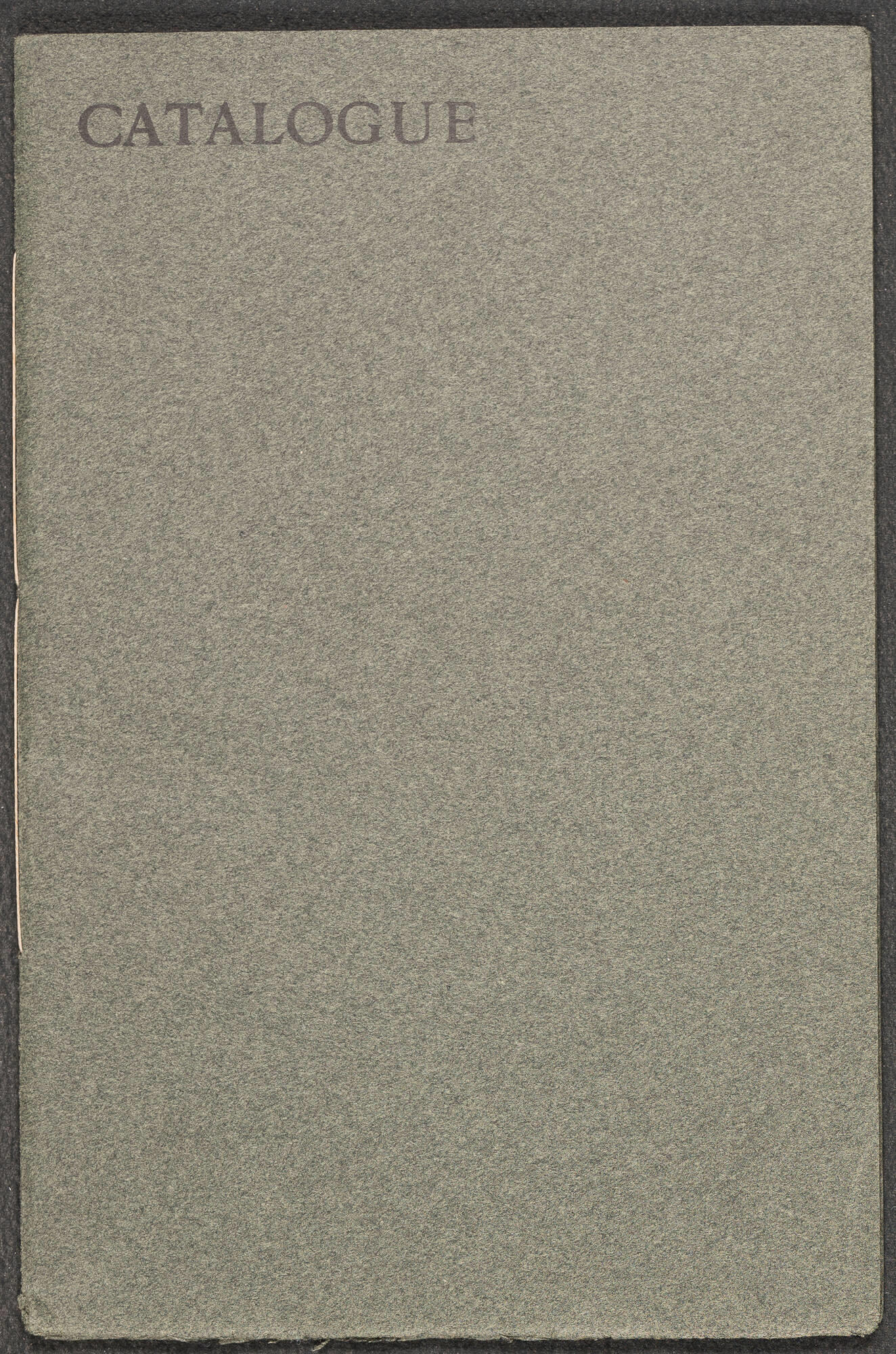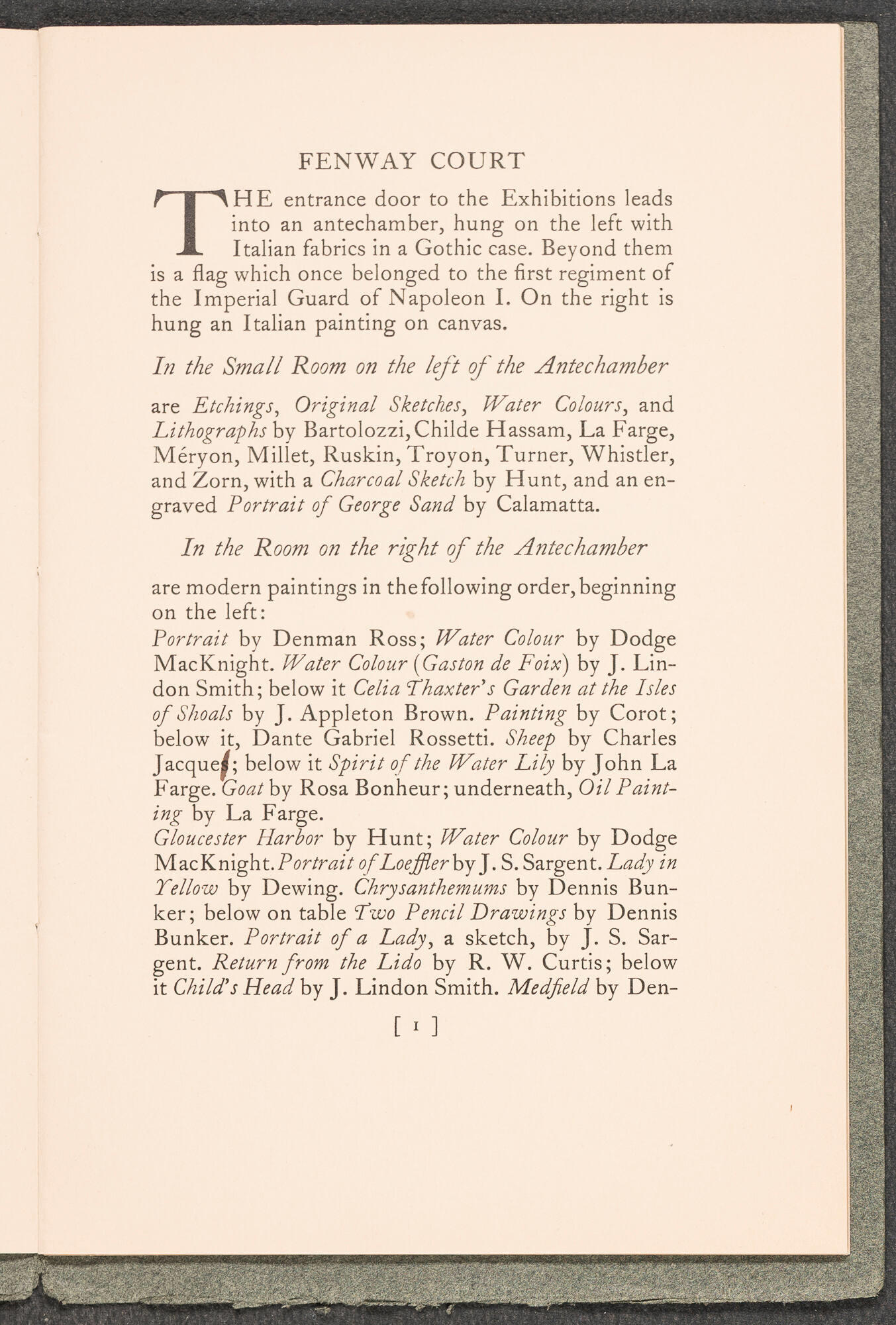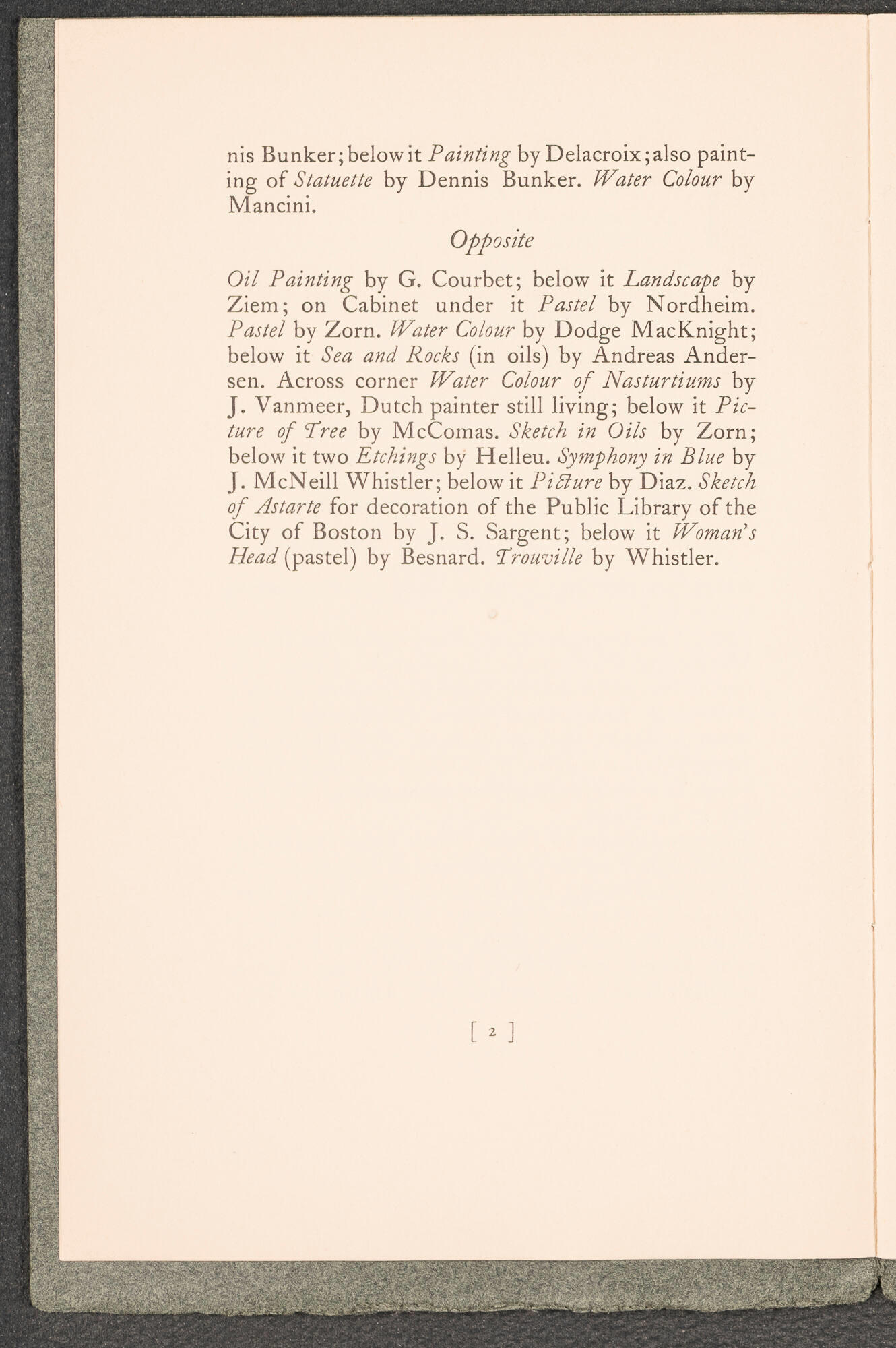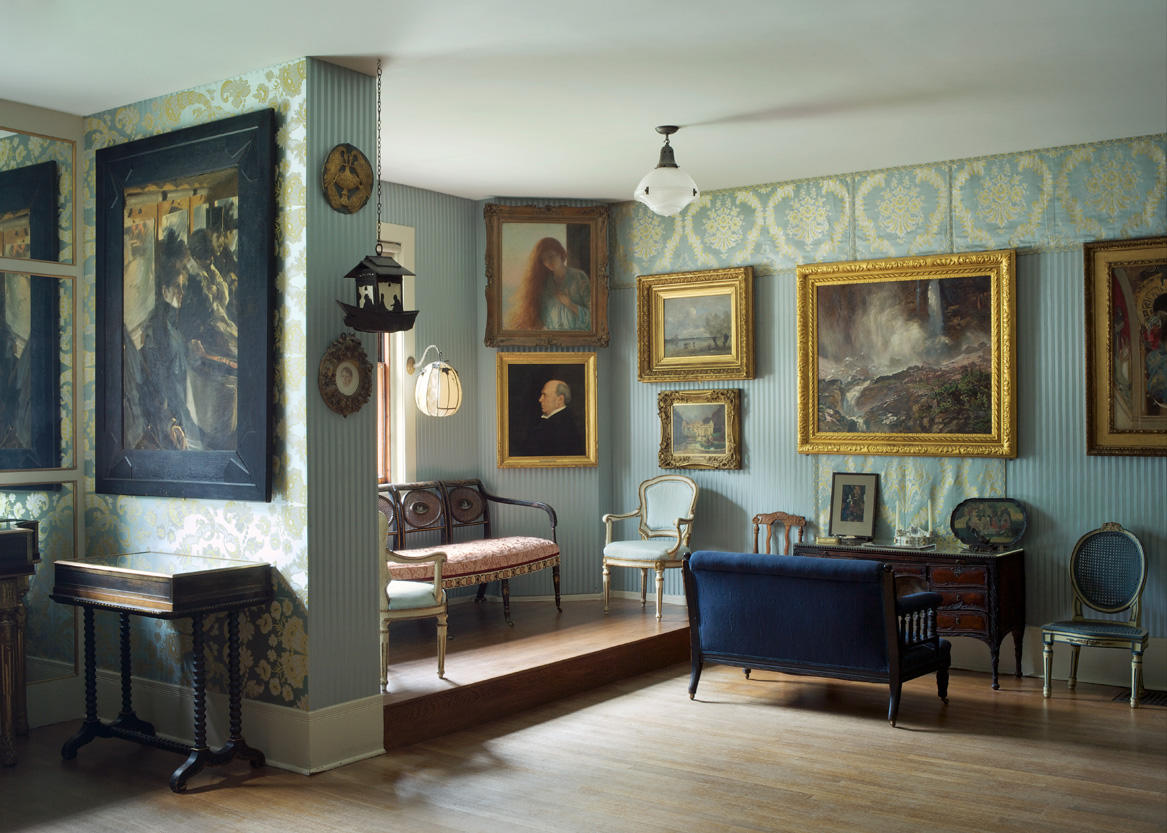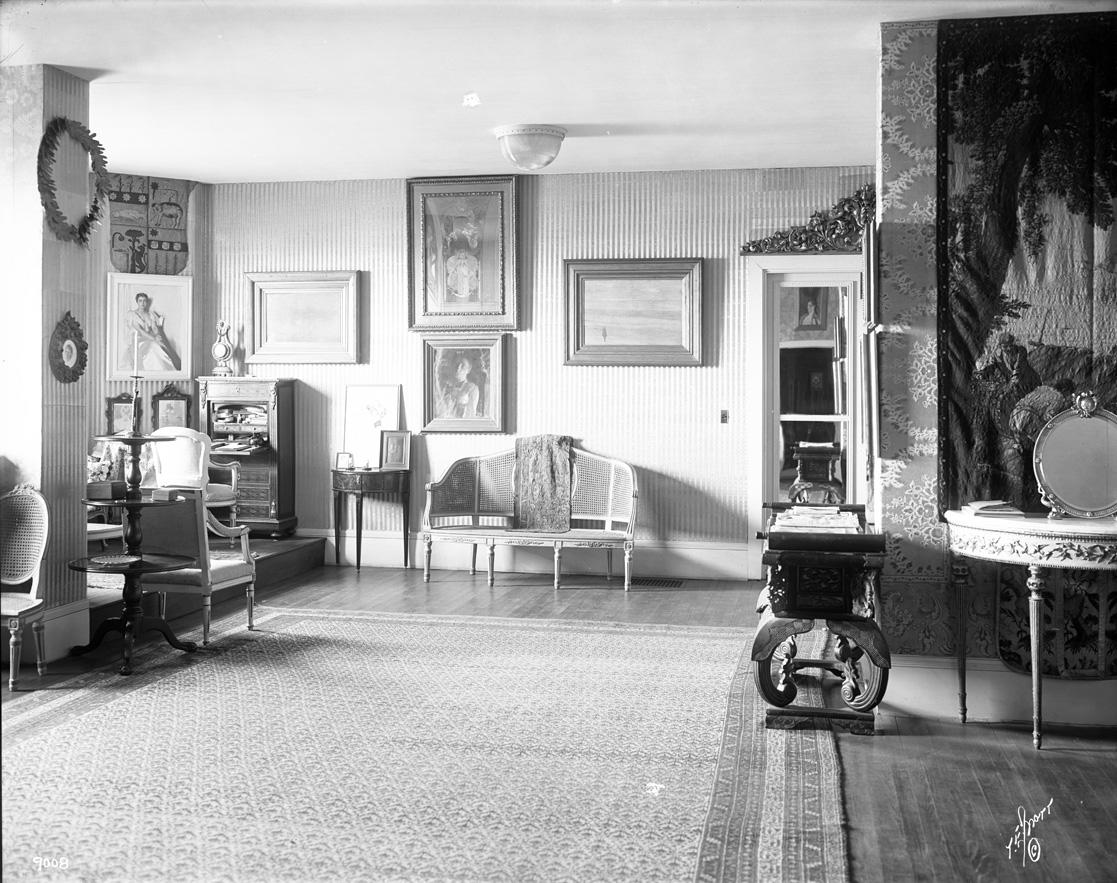Fenway Court, as the Museum was known from its founding until Isabella Stewart Gardner’s death in 1924, opened to the public for the first time on February 23, 1903 for three consecutive days. After years of speculation by the press about the collection and the intent of the building, The Boston Globe reported that, “An inspection of the palace settles a much-disputed point unequivocally, and that is that the establishment is not a private residence with an art gallery attachment, but is really an art museum in every sense of the word…”¹
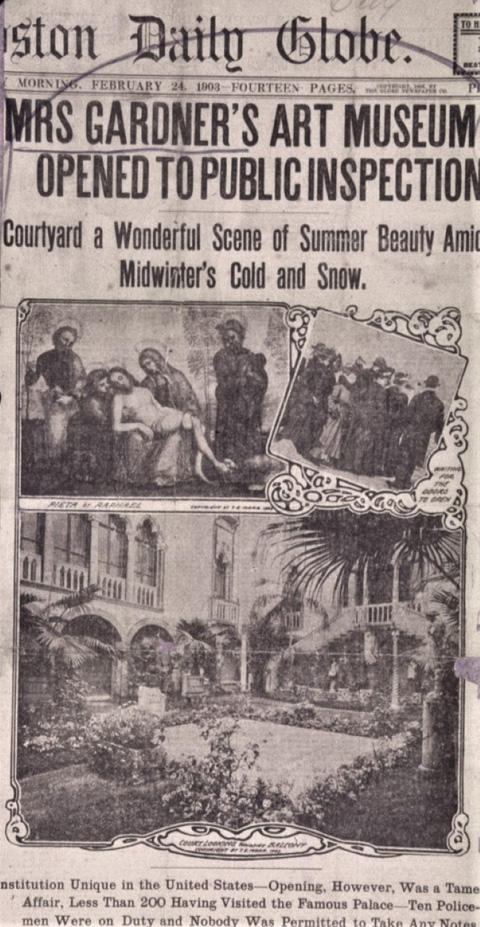
“Mrs. Gardner’s Museum Opened to Public Inspection,” Boston Globe, 24 February 1903
Tickets
In its early years, the Museum was open 11 am–3 pm with tickets limited to 200 each day. By 1910, the museum opened for a week in the fall around Thanksgiving and again in the spring near Easter.
Eager visitors found open dates and times listed in the local newspapers and could purchase admission tickets for one dollar at Herrick’s ticket office in Copley Square. Since tickets usually sold out due to high demand, Gardner added a week of public hours and special open days for students at colleges and universities.
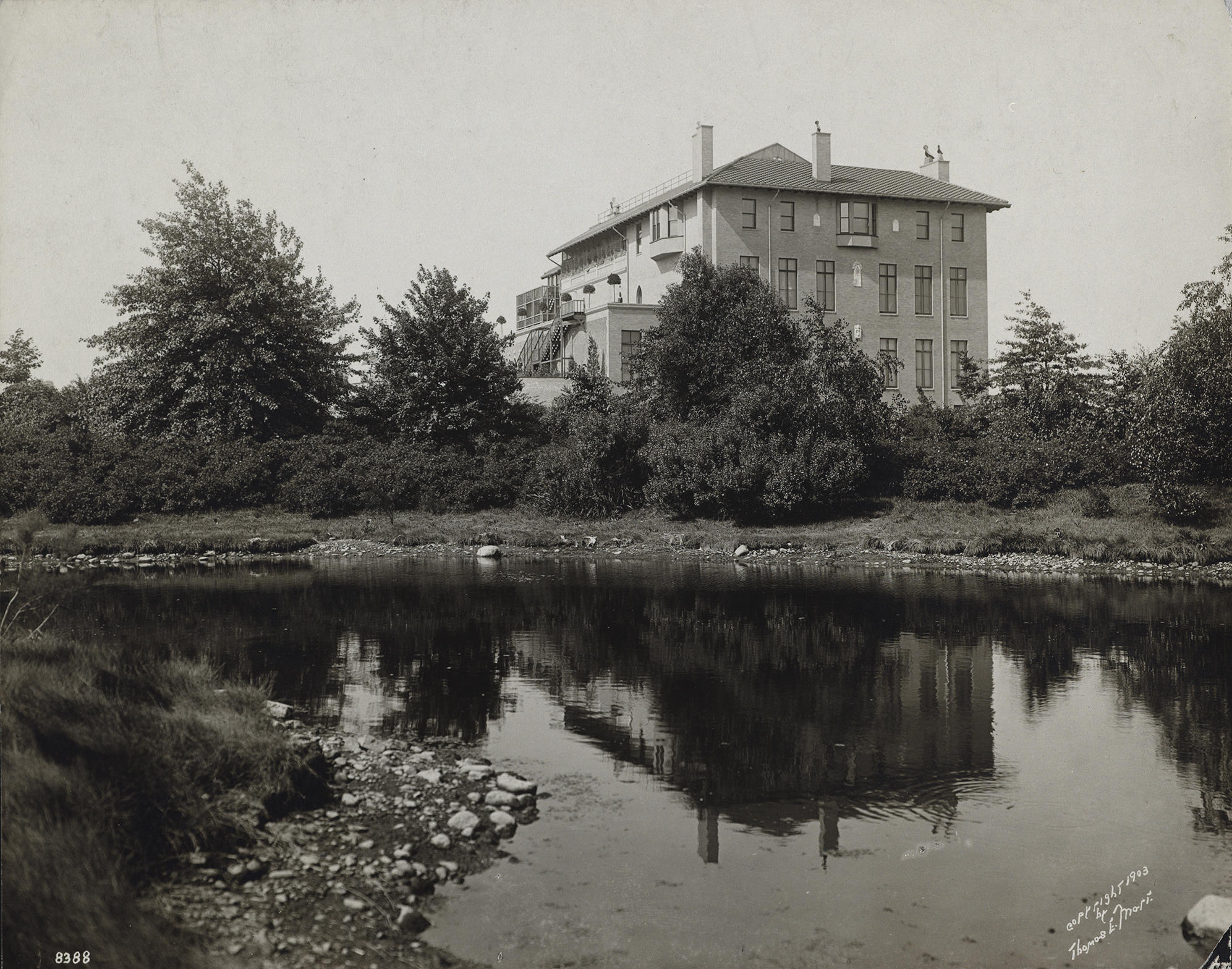
Exterior of the Isabella Stewart Gardner Museum from the Fens, 1903
Photo: Thomas E. Marr. Isabella Stewart Gardner Museum, Boston
The Museum in 1903
In 1903, the Museum looked different than it does today. Isabella Stewart Gardner often added to her collection, moved artworks, and altered the building to suit her vision. However, Gardner directed in her last will and testament that the collection could not be added to and the arrangement of the artworks should remain the same. Visitors today see the Museum the way it was arranged in 1924—the year of her death.
A Typical Visit
Since 2012, visitors have entered through the new wing designed by Renzo Piano, but on February 23, 1903, visitors lined up outside the small door closest to Evans Way, facing the Fens parkway. Many of the visitors arrived by horse carriage or similar to today, walked from public transportation.
Visitors arrived through the wood and glass door to the tiled entrance hall between the Yellow and Blue Rooms (now the Fenway Gallery, a special exhibition space). Once in the museum, visitors could purchase a small paper catalogue containing a self-guided tour of collection highlights written and compiled by Gardner annually. The catalogue followed a specific route through the galleries that visitors were encouraged to follow during their visit.
The tour began in the Yellow Room, where Gardner’s print and drawing collection was displayed (until 1915, when it moved into the Short Gallery) and continued to the Blue Room gallery to the right of the entrance. Here, Isabella displayed contemporary works by artists like John Singer Sargent and Corot on blue silk walls, similar to how it looks today.
Outside the Blue Room, visitors would encounter the verdant Courtyard for the first time. One reporter for Harper’s Bazaar noted “From the moment the threshold of Fenway Court is crossed till the last long lingering look behind is taken, the eye is satisfied with beauty. The dripping of the mossy marble fountains, the perfume of the acacia and stephanotis, the singing of birds, the tall palms lifting their heads in the sunshine, the wide brilliant border of flowers around the antique mosaic centre pavement— these make the great enclosed court the key-note and the culmination of the whole palace.”²
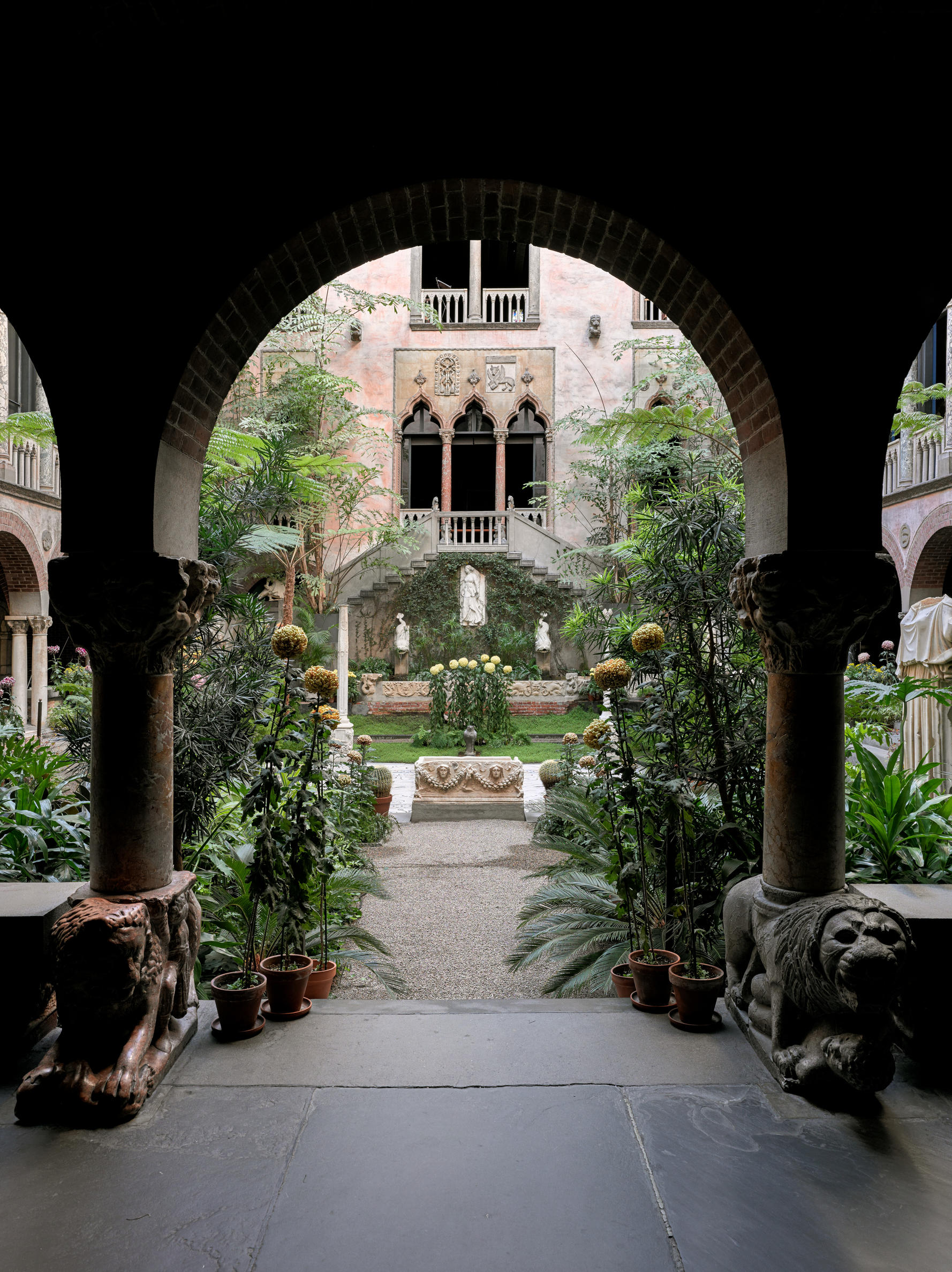
Courtyard
Photo: Sean Dungan. Isabella Stewart Gardner Museum, Boston
Visitors toured the galleries by natural light from the Courtyard and outside windows, and on the second floor in the Dutch Room, they were warmed by a fire in the fireplace. Their journey ended in the Long Gallery, as the Chapel and Gothic Room were closed to the public until after Gardner’s death. However, they may have been able to catch a glimpse of John Singer Sargent’s infamous portrait of Isabella through the wrought iron choir screen in the Third Floor Stairhall.
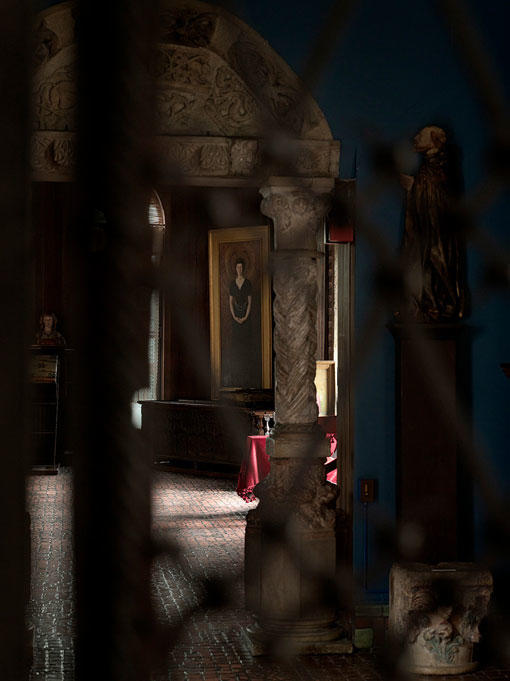
John Singer Sargent’s portrait of Isabella Stewart Gardner in the Gothic Room viewed through the wrought iron gate in the Third Floor Stairhall
Photo: Sean Dungan. Isabella Stewart Gardner Museum, Boston
Visitors could remember their tour of Fenway Court by purchasing a photographic print from father and son duo Thomas and Arthur Marr. They sold them as souvenirs in the museum and at their storefront on Tremont Street, near the Boston Common.
The Rules
There were some unique and inconvenient restrictions in the early years. Visitors were prohibited from re-visiting galleries, sketching, or note taking. After admonishing a teacher for taking notes in the Titian Room, Gardner invited her for a private visit as an apology and relaxed her rule.³
Gardner was protective of her collection, and was always present during open hours. Sometimes she’d take tickets at the door and other times walk around, observe visitors, and answer questions. After suffering a stroke in 1919, she’d sit in the Macknight Room and greet visitors.⁴
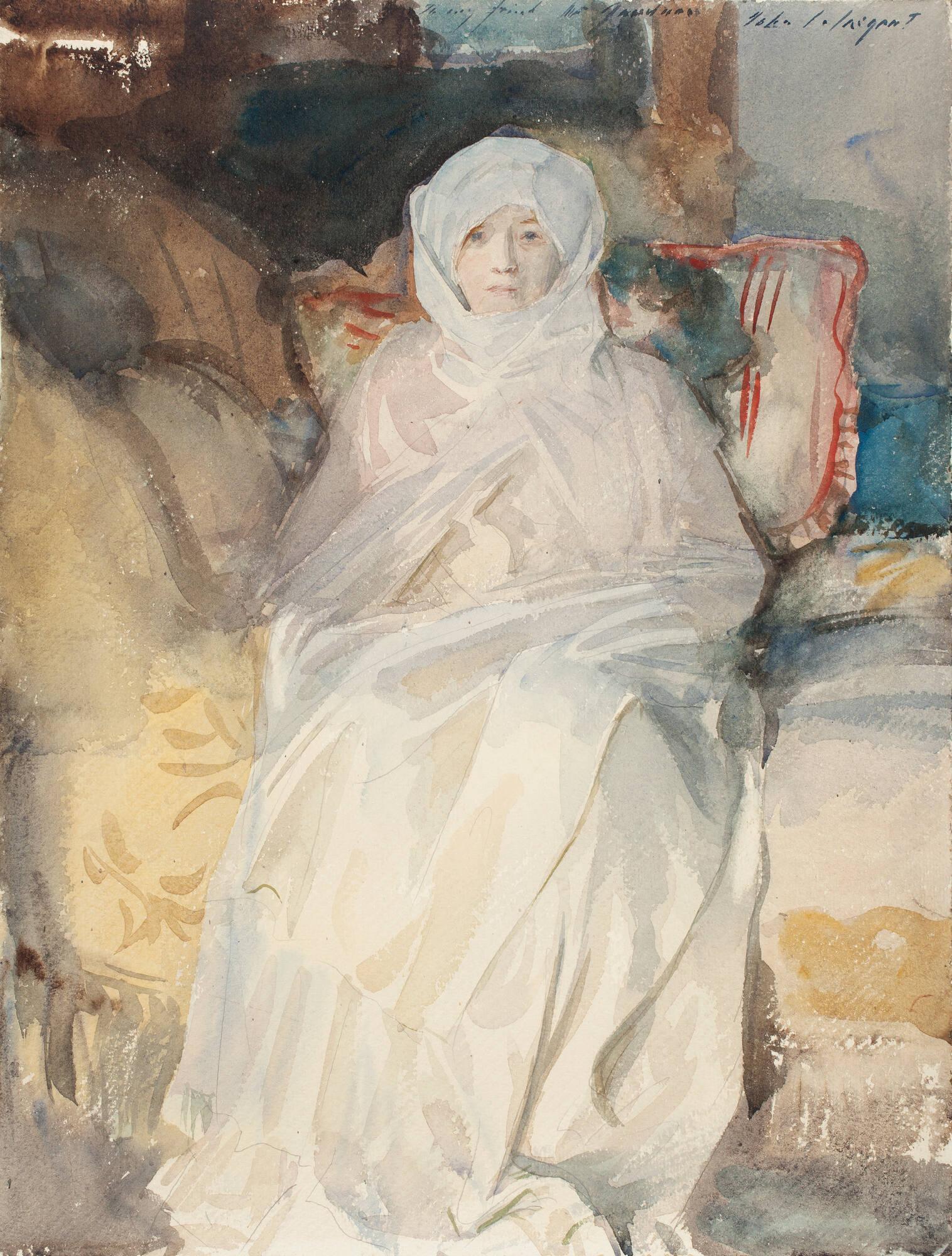
John Singer Sargent (American, 1856-1925), Mrs. Gardner in White, 1922. Watercolor on paper, 43 x 32 cm (16 15/16 x 12 5/8 in.)
Isabella Stewart Gardner Museum, Boston (P11e13)
In early years, galleries were attended by women and monitored by Boston police—including plainclothes detectives. Later, Harvard and Radcliffe students and Gardner’s friends replaced the police.
Visitor Appreciation
Isabella Stewart Gardner saved thank you letters sent by visitors. Many were from women who were inspired by her work and vision.
As I think of the care, the time, the study not to mention the expense that such a collection of historic and valuable articles have cost you personally, I cannot help writing that I am proud that a woman has been permitted to do this—the result of years of research and study.
The Museum is now open 6 days a week welcoming over 315,000 visitors annually. As it did in the early 20th century, the Museum continues to leave an indelible impression on many.
You May Also Like

Read More on the Blog
A Grand Opening

Visit the Museum
Museum Hours and Information

Read More on the Blog
Shedding Light on the History of Lighting
¹ The Boston Globe, Tuesday, February 24, 1903 : “Mrs. Gardner’s Art Museum Opened to Public Inspection, Courtyard a Wonderful Scene of Summer Beauty Amid Midwinter’s Cold and Snow.”
² Pricilla Leonard, “Mrs. Gardner’s Venetian Palace”, Harper's Bazaar, July 1903, vol.37, pp. 660-662
³ Louise Hall Tharp, Mrs. Jack: A Biography of Isabella Stewart Gardner ( Boston:1965; Reprint, Boston: 2016) p. 263.
⁴ Isabella Stewart Gardner, Morris Carter, Day book (Tagebuch), 1900-1924, April 3-8, 1922. And Tharp, 1965, p. 322.
